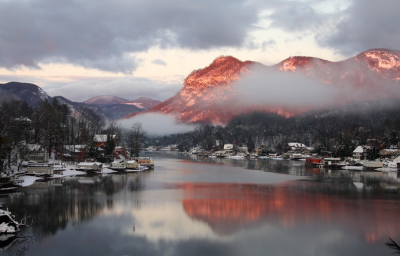Are You Ready for a Winter Storm?
A winter storm watch means that a winter storm is possible in the area. Therefore, continue to listen and be alert to changing weather conditions, and avoid unnecessary travel.
A winter storm warning means a winter storm is headed to the area. Therefore, stay indoors during the storm. If you must go outside, then dress with several layers of lightweight clothing, which will keep you warmer than a single heavy coat. Gloves and a hat will prevent loss of body heat, and remember to cover your mouth to protect your lungs.
A blizzard warning means strong winds, blinding wind-driven snow, and dangerous wind chill are headed to the area. Seek shelter immediately!
To prepare for an emergency:
- Assemble disaster supplies for your house in advance.
- Ensure that each member of your household has a warm coat, gloves or mittens, hat, and water-resistant boots.
- Have extra blankets on hand.
- First aid kit and essential medications for several days, including additional cylinders of oxygen if used by those in your household.
- Battery-powered weather radio and portable radio flashlight with extra batteries.
- non-perishable food for several days and non-electric can opener.
- Bottled water.
- Heating fuel.
- Secure backup heat sources such as kerosene.
- Bags of salt for slippery walkways and driveways if you must leave your home.
- Avoid traveling by car in a storm, if possible, but if you must travel, then let someone know your destination and your traveling route. Travel well in advance of the storm.
- Winterize your car before the winter storm season by replacing the antifreeze in your car.
- Keep your car’s gas tank full for emergency use and to keep the fuel line from freezing.
- Flashlight with extra batteries.
- Have extra blankets and warm clothes in your car.
- If you do get stuck in a winter storm.
- Stay with your car. Do not try to walk to safety.
- Tie a brightly colored cloth (preferably red) to the antenna for rescuers to see.
- Start the car and use the heater for about 10 minutes every hour, and keep the exhaust pipe clear so fumes won’t back up into the car.
- As you sit, keep moving your arms and legs to keep blood circulating and to stay warm.
- Keep one window away for the blowing wind slightly open to let in the air.
Note:
- (a) Understand the hazards of wind chill, which combines the cooling effect of wind and cold temperatures on exposed skin. As the wind increases, heat is carried away from a person’s body at an accelerated rate, driving down the body temperature.
- (b) Walk carefully on snow, icy sidewalks.
- (c) After the storm, if you need to shovel snow, then be extremely careful. It is physically strenuous work, so take frequent breaks. Avoid overexertion.


